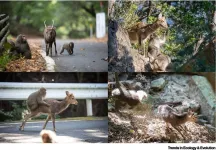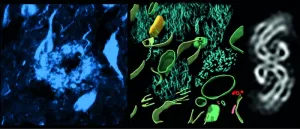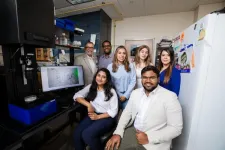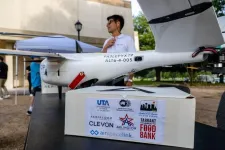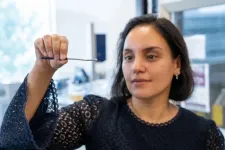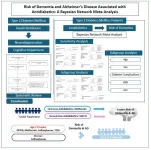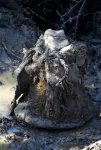(Press-News.org) Cooperative hunting, resource sharing, and using the same signals to communicate the same information—these are all examples of cultural sharing that have been observed between distinct animal species. In an opinion piece published June 19 in the journal Trends in Ecology & Evolution, researchers introduce the term “co-culture” to describe cultural sharing between animal species. These relationships are mutual and go beyond one species watching and mimicking another species’ behavior—in co-cultures, both species influence each other in substantial ways.
“Co-culture challenges the notion of species-specific culture, underscoring the complexity and interconnectedness of human and animal societies, and between animal societies,” write the authors, behavioral ecologist Cédric Sueur (@cedricsueur) of the Institut Pluridisciplinaire Hubert Curien (IPHC), Université de Strasbourg-CNRS, and the Institut Universitaire de France and primatologist Michael Huffman of Kyoto University and Nagasaki University. “These cross-species interactions result in behavioral adaptations and preferences that are not just incidental but represent a form of convergent evolution.”
Co-cultures have been observed between humans and nonhuman animals—for example, between humans and honeyguides in Tanzania and Mozambique, where the birds lead humans to honeybee nests. They are also evident between different species of nonhuman animals—for example, cooperative scavenging between ravens and wolves, cooperative hunting between false killer whales and bottlenose dolphins, and signal sharing between distinct species of tamarin. Ultimately, this inter-species sharing of culture could drive evolution, the researchers say.
“Cultural behaviors that enhance survival or reproductive success in a particular setting can lead to changes in population habits that, over time, could drive genetic selection,” they write.
To extend our understanding of co-cultures, the researchers say that future studies could start by investigating wild animals in urban environments. “Urban animals modify their behaviors, learning, and problem-solving skills to cope with urban challenges, reflecting a dynamic response to urban landscapes,” they write. “Similarly, humans alter their urban spaces, influencing wildlife behavior and evolution. This reciprocal adaptation between humans and wildlife is fundamental to understanding co-culture.”
Future research is also needed to examine the possibility of cultural and genetic co-evolution—the idea that species’ cultures and genomes are evolving in concert. A key question, the researchers say, is “In the context of co-culture, how do cultural adaptations influence genetic evolution, and vice versa, across different species and environments?”
###
Trends in Ecology and Evolution, Sueur and Huffman, “Co-cultures: exploring interspecies culture among humans and other animals” https://www.cell.com/trends/ecology-evolution/abstract/S0169-5347(24)00122-8
Trends in Ecology & Evolution (@Trends_Ecol_Evo), published by Cell Press, is a monthly review journal that contains polished, concise, and readable reviews and opinion pieces in all areas of ecology and evolutionary science. It aims to keep scientists informed of new developments and ideas across the full range of ecology and evolutionary biology—from the pure to the applied, and from molecular to global. Visit http://www.cell.com/trends/ecology-evolution. To receive Cell Press media alerts, please contact press@cell.com.
END
As container ships the size of city blocks cross the oceans to deliver cargo, their huge diesel engines emit large quantities of air pollutants that drive climate change and have human health impacts. It has been estimated that maritime shipping accounts for almost 3 percent of global carbon dioxide emissions and the industry’s negative impacts on air quality cause about 100,000 premature deaths each year.
Decarbonizing shipping to reduce these detrimental effects is a goal of the International Maritime Organization, ...
Scientists investigating Alzheimer’s disease have determined the structure of molecules within a human brain for the very first time.
Published today in Nature, the study describes how scientists used cryo-electron tomography, guided by fluorescence microscopy, to explore deep inside an Alzheimer’s disease donor brain.
This gave 3-dimensional maps in which they could observe proteins, the molecular building blocks of life a million-times smaller than a grain of rice, within the brain.
The study zoomed in on two proteins that cause dementia– ‘β-amyloid’, a protein that forms microscopic ...
EL PASO, Texas (July 11, 2024) – Researchers at The University of Texas at El Paso have made significant inroads in understanding how nanoplastics and per- and polyfluoroalkyl substances (PFAS) — commonly known as forever chemicals — disrupt biomolecular structure and function. The work shows that the compounds can alter proteins found in human breast milk and infant formulas — potentially causing developmental issues downstream.
Nanoplastics and forever chemicals are manmade compounds present throughout the environment; a series of recent studies have linked them to numerous ...
What is the structure of a particular molecule? And how do molecules interact with each other? Researchers interested in those questions frequently use nuclear magnetic resonance (NMR) spectroscopy to find answers. In NMR, a powerful external magnetic field is employed to align the spins of atomic nuclei, which are then induced to rotate by an oscillating weak magnetic field generated by coils. A change in voltage as a result can be converted to measurable frequencies. Based on this, researchers can identify the molecular structures while also revealing ...
A new report shows that research projects at The University of Texas at Arlington contributed one quarter of a billion dollars—$226.4 million, to be exact—to the national economy through 797 vendor contracts and subcontracts between 2018 and 2022. Of those contracts, 111 were from small businesses and 87 from minority- or woman-owned businesses.
“Research coming from UT Arlington faculty and students not only helps solve some of society’s most vexing problems, but it is also an important economic driver for business development,” said Kate C. Miller, vice president for research and innovation at UTA. “This report makes clear that UTA research ...
The great promise of bacteriophages is that they naturally destroy bacteria, often in situations where antibiotics fail.
Until now, though, there has been no way to access them quickly and efficiently, especially in emergency cases of antibiotic resistant infections.
Researchers at McMaster University, working with a colleague from Université Laval, have developed a simple new way to store, identify, and share phages, making them more accessible to patients who need them.
“Bacteriophages ...
HOUSTON ― The University of Texas MD Anderson Cancer Center’s Research Highlights provides a glimpse into recent basic, translational and clinical cancer research from MD Anderson experts. These advances are made possible through seamless collaboration between MD Anderson’s world-leading clinicians and scientists, bringing discoveries from the lab to the clinic and back.
Recent developments at MD Anderson offer insights into mechanisms regulating metabolic programming and cellular senescence, ...
Ann Arbor, July 11, 2024 – Investigators analyzing the potential cognitive effects of antidiabetic medications in records of more than 1.5 million patients with type 2 diabetes mellitus (T2DM) found risks of dementia and Alzheimer’s disease (AD) were significantly lower in patients treated with metformin and sodium glucose co-transporter-2 inhibitors (SGLT-2i) compared to other antidiabetic drugs. Their results appear in the American Journal of Preventive Medicine, published by Elsevier.
T2DM has become ...
An international research team has assembled the genome and 3D chromosomal structures of a 52,000-year-old woolly mammoth—the first time such a feat has been achieved for any ancient DNA sample. The fossilized chromosomes, which are around a million times longer than most ancient DNA fragments, provide insight into how the mammoth’s genome was organized within its living cells and which genes were active within the skin tissue from which the DNA was extracted. This unprecedented level of structural detail was retained because ...
An increased amount of thick sea ice flowing south from the Arctic Ocean shortened the ice-free shipping season in several parts of the Northwest Passage between 2007 and 2021, according to an analysis in Communications Earth & Environment. The authors suggest this could mean the Northwest Passage is unlikely to become a viable alternative to traditional shipping routes, despite previous hopes that it may become viable due to global warming.
The Northwest Passage (NWP) is a commercial shipping route connecting the Atlantic and Pacific Oceans that runs through the Arctic Circle north of North America. Through the Canadian ...
